Sports
‘Leave no crumbs’: Stefon Diggs rebounded from injury and found a fit with Patriots
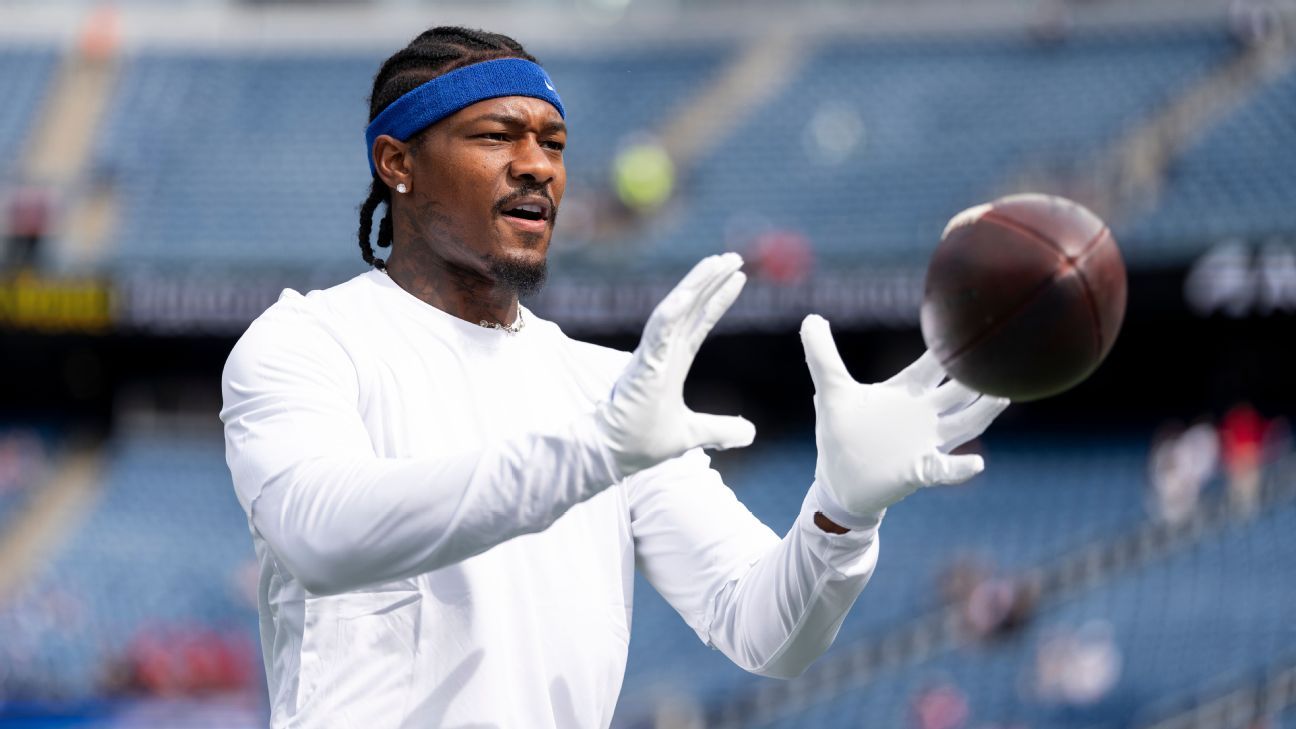
FOXBOROUGH, Mass. — On Sunday evening, Stefon Diggs entered the New England Patriots auditorium and stepped up to the podium with an energetic hop.
“Everyone looks so comfortable,” he said, greeting the media with a smile.
The Patriots had just cruised to a 42-13 victory over the Carolina Panthers, in which the wide receiver, too, looked comfortable. For the first time in 22 games, he crossed the 100-receiving yard threshold. He called it a “turn the corner” day.
“I’m just super excited and want to keep building,” Diggs said.
When the Patriots signed the four-time Pro Bowler to a three-year, $69 million contract in March, there were many uncertainties.
It was unknown if Diggs, who sustained a torn right ACL last October, would be ready for the start of the 2025 regular season. If he was, there was no guarantee he could once again deliver as a No. 1 receiver in his 11th NFL season. Or how he would fit into the new Patriots regime led by coach Mike Vrabel and offensive coordinator Josh McDaniels.
Those questions percolated in the spring when Diggs was in and out of the team’s voluntary workout program which had an otherwise high attendance rate. He made headlines by appearing in a video on a boat that went viral, forcing Vrabel to address it.
Behind the scenes, though, Diggs was working hard to rehab his ACL injury in Florida and to get back on the field as quickly as possible. He was ready by training camp, with his personal athletic trainer calling it a “historically fast” recovery.
Now four weeks into the 2025 season, Diggs, 31, is emerging as an ideal fit with the Patriots.
“Putting in that time, putting in that grind throughout camp, I feel like you don’t know what it’s going to be like until the season is here. That’s when the pedal hits the metal and you get your confidence from growing within the system and getting used to a system and a quarterback — and all these things are brand new to me,” Diggs said Sunday.
“My focus has always been grinding and I’m going to figure it out. I’m probably going to work a little harder now, because when things are going right, you can’t relax and get complacent.”
Diggs now has momentum heading into a game he said he has been looking forward to, returning to face his former team, the Buffalo Bills, on Sunday at Highmark Stadium (8:20 p.m. ET, NBC) — a contest marking the first time Diggs will play in Western New York, where he was once quarterback Josh Allen’s go-to target, since the Bills traded him to the Houston Texans in April 2024.
The 2015 fifth-round pick ranks sixth in receiving yards (10,704) and touchdowns (70) since entering the NFL a decade ago.
While his on-field performances continue to evolve with the Patriots, Diggs has also emerged as a leader in the locker room. Since joining the team, Diggs has inspired teammates with pregame speeches. He has also developed a rapport with second-year quarterback Drake Maye, similar to what he did with Allen (then in his third season) when the Bills acquired him from the Minnesota Vikings in 2020.
“[Diggs is] a great teammate. I think that’s the biggest thing,” Maye said. “He’s fire on game day. You see him even in practice, he wants to bring it. He thinks a lot of the guys around him. He wants to be a great teammate, he wants to bring the energy, and he wants the ball.”
WHEN DIGGS SPRINTED onto the field before kickoff of the 2025 season opener, he made his way to the back left pylon of the far end zone, dropping to his knee to reflect. There was a lot going through his mind before his first game back after the injury.
“I took a little moment to be grateful and kind of bask in the ambiance of where I was, back doing what I love,” he explained.
Scene-setter: Stefon Diggs takes a moment of reflection at the back pylon upon taking the field.
Long road back from injury.
Diggs then got up and pumped his arm in excitement. pic.twitter.com/XPyi2Ldbea
— Mike Reiss (@MikeReiss) September 7, 2025
His torn ACL, his first major injury in the NFL, had challenged him in ways he never had been before. He acknowledged it was one of the hardest things he has ever experienced.
“I was in, like, a real, real dark space for a little while. I had to pull myself out of it. I still kind of go through it here and there,” he said. “Probably just because where I’m at in my career right now, it was rough for me. I went through a lot in the offseason.”
Diggs credits his rehab with Dr. Sharif Tabbah, of Florida-based Alkemē Sports Rx, for getting him back on the field quickly. The typical timeframe for receivers recovering from a torn ACL is 9-12 months, according to Tabbah. Diggs passed his physical with the Patriots July 19, just 8½ months after tearing his ACL, which Vrabel noted was a credit to how hard Diggs worked.
Tabbah, who trains NFL receivers Jerry Jeudy (Cleveland Browns), CeeDee Lamb (Dallas Cowboys) and Rashee Rice (Kansas City Chiefs), among others, recalled seeing a social media post from Diggs immediately after surgery in which he was in a hospital bed with his head in his hands.
“Anyone could tell from the post he was going through it mentally, as many athletes do, especially when they haven’t had a major injury in their careers,” Tabbah said. “I kind of teased him and said, ‘Man, you look like your life is over in these photos. Don’t worry. We’re going to bounce back. My goal for you is not to get back to 100%. It’s to get you to 110%. I want you leaving here better than before the injury.'”
There was standard early progress in the rehab work, with Diggs’ dedication reflected in bringing Tabbah to New York with him when plans called for him to be away from Florida. Then Tabbah said Diggs’ recovery took off about four months in, when physical testing numbers indicated he could begin to work on cutting.
“As we started doing that, and he was doing so well so quickly, that’s when it started to get really impressive,” Tabbah said. “We were doing top-of-the-route stuff at four and half, five months, which is crazy. It was clean and smooth.”
Among the methods Tabbah integrated into Diggs’ rehab included traditional manual therapy, special electrical stimulation machines to help recruit more muscle fibers to get his strength back faster, an anti-gravity treadmill to progress to running and pool work for jumping, cutting and running. That all led up to Diggs returning to the field and focusing on football-type movements and footwork.
Along the way, Diggs also leaned on teammates and others around him, such as his girlfriend Cardi B, who recently announced they are expecting a child.
“Coming off injury isn’t easy, but when you’re around the right guys it makes it easier,” he said to reporters earlier this season.
“My life could be a lot worse,” Diggs added. “I’m blessed. I have a lot to look forward to each day. I have some beautiful kids. Got a beautiful support system. My life ain’t that hard. There are a lot of people in the world who go through way worse things on a daily basis. Just roll with the punches, know what I’m saying?”
The Patriots were cautious with Diggs in the preseason, holding him out of games, and sometimes limiting his practice reps. So taking hits was on Diggs’ mind entering the 2025 season. After a 20-13 loss to the Las Vegas Raiders in Week 1, Diggs said he sought out contact to help him take the next step in his return.
After the team’s Week 2 win over the Dolphins in South Florida, in which Tabbah attended as Diggs’ guest, the two connected to evaluate how the knee responded to increased demand and the load of the season. Tabbah was once again encouraged by what he saw and heard from Diggs.
They then gave the knee manual therapy and recovery work, followed by activation and corrective exercises, as well as balance drills.
“It was a tuneup, a check-in on how everything looked, and he looked great. I was pleased to see how well he continues to hold up despite such a historically fast return,” Tabbah said. “He had maintained everything we worked on and was very confident. He told me he hasn’t thought about his knee in any way on the field.”
Diggs echoed those thoughts to reporters soon after.
“I feel great,” he said in the Patriots’ locker room. “I’m trying to stay feeling great. Now it’s turning a key and being out there consistently, it’s getting back to the feel of the game.”
AGAINST THE PITTSBURGH Steelers in Week 3, Diggs made a play that Vrabel loved.
Running a shallow route across the middle, Diggs tied up two defenders, which allowed running back Rhamondre Stevenson to catch a short pass and run 23 yards. Vrabel pointed out Diggs had a similar play the week before that wasn’t executed, so it showed his progress and also unselfishness.
For Diggs, this is what he has consistently referred to this season as “eating what’s on my plate.”
“Whatever they give you, take it, handle it with grace, and continue to push teammates,” he explained. “That’s where I am at this point [in my career].
“I’m here for whatever they need. I’ve been doing this for a long time, I’m a veteran, I’m healthy. Shout out to God. I’m not going to bite off more than I can chew, or I’m not going to ask [for] anything. I’m just going to handle what’s in front of me.”
Through four games, Diggs has been on the field for 55.5% of the offensive snaps, the third most among receivers behind Kayshon Boutte (75.2%) and Mack Hollins (57.9%). He ranks first on the team in receptions (19) and receiving yards (213) and is looking for his first touchdown.
Vrabel left open the possibility that Diggs’ playing time increases, noting that some of it is tied to what packages have been utilized most (e.g. more two tight ends) and “trying to find a role for each and every [receiver].”
Meanwhile, Diggs insists his sole focus is on maximizing whatever he does get.
“Comparison is the thief of joy. I can’t really think about what’s going on around me. I’ll be cheering for my guys — always clap for everybody around me, I pretty much always have been that way,” he said. “Even if you do want more, whatever is on your plate, you have to eat it. But I never want to fall into the trap of focusing on something else and not eating the food in front of me. I want to make sure I scrape the plate. Leave no crumbs.”
Such an approach has positioned Diggs as a commanding presence within the team, even though he isn’t one of the team’s six captains.
“One of the cool things is watching his maturity as a leader and hearing him kind of be a champion of the cause for coach Vrabel, coach McDaniels and myself,” said wide receivers coach Todd Downing, who was on the Vikings’ coaching staff in 2018 when Diggs was in his fourth NFL season. “If there is something that we emphasize, he’s going to have our backs with the young guys. Or if he sees somebody on the field not doing it, he’ll hold them accountable.
“He’s always had a relentless work ethic. He’s been working diligently mentally to be able to handle everything we throw at him.”
McDaniels, whose brother Ben serves as the Texans wide receivers coach and raved about Diggs last year, noted Diggs’ intelligence in adapting to the Patriots’ system.
“He has a lot of game experience and savvy. It doesn’t take long to have a conversation with him about something you want to do, or if you have an idea or vision of how you want it to play out, and Stef can go out there and he’s following you when you’re speaking to him or we’re watching film,” Josh McDaniels said.
“[He’s] very competitive, and in the right way. His leadership is intense, but it’s the right type of intensity because he wants to win. Unselfish. He’s been a very good teammate. Love working with him. Brings an excitement to it every day.”
A win Sunday against one of Diggs’ former teams would be surprising, as the Patriots enter as 7.5-point underdogs according to ESPN BET. Nonetheless, Bills fans might be surprised at what they see from Diggs and hear from him in the days leading up to the game.
“It’s going to be a crazy atmosphere. Obviously, I spent a lot of years there. They have one of the best fan bases in the game, if not the best fan base. So, shout out to them,” Diggs said. “In the division, they say it’s one game, but it damn near counts as two. I’m excited for the challenge.”
Sports
NHL Bubble Watch: Projecting playoff hopes for all 32 teams
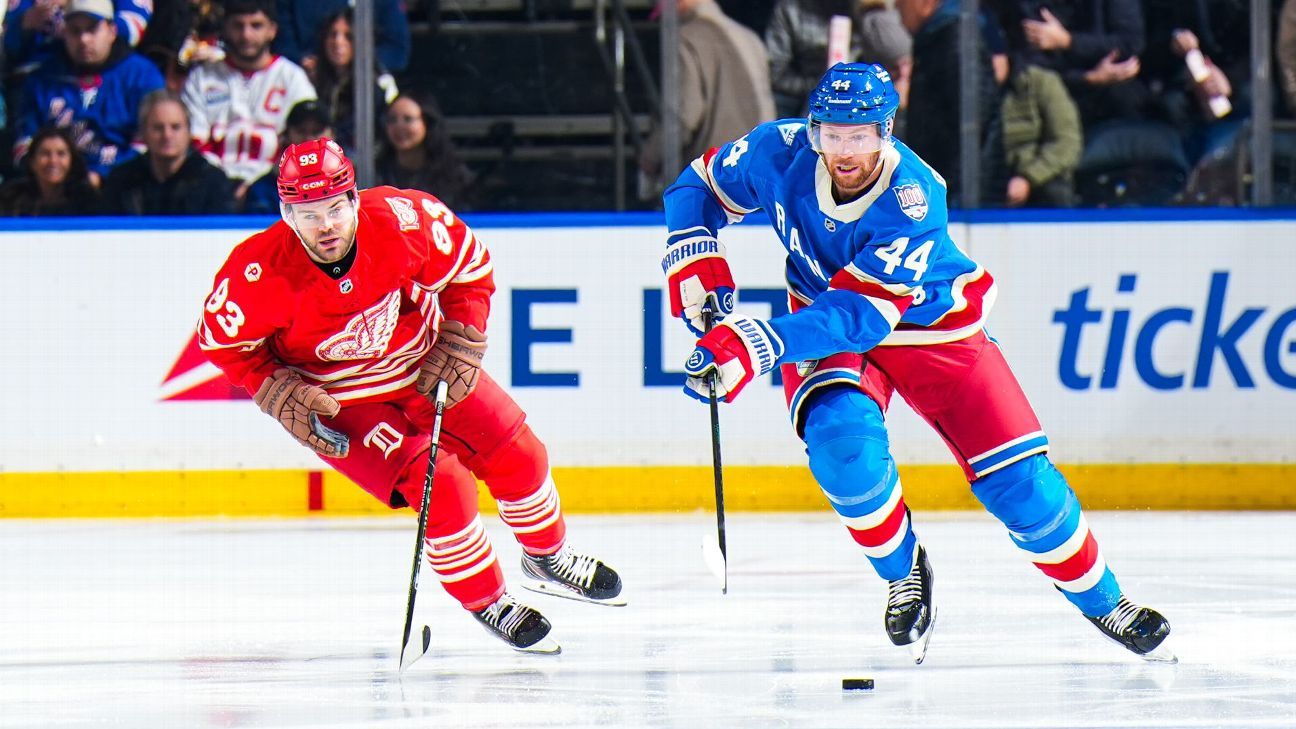
The NHL playoff bubble is pretty much the size of that one Glinda flies around in during “Wicked.”
Heading into Tuesday night, no team in the East was more than four points out of the wild-card spot. In the West, all but three teams were within three points of a playoff spot. If the NHL is striving for parity, this has been an ideal start.
The NHL Bubble Watch is our monthly check-in on the Stanley Cup playoff races using playoff probabilities and points projections from Stathletes for all 32 teams. We also reveal which teams shouldn’t worry about any of this because they’re lottery-bound already.
This month, we’re also looking at points of concern early this season for teams inside and outside the bubble.
But first, a look at the current playoff bracket:

Current playoff bracket
M1 Carolina Hurricanes vs. WC2 Tampa Bay Lightning
M2 New Jersey Devils vs. M3 Pittsburgh Penguins
A1 Detroit Red Wings vs. WC1 New York Islanders
A2 Boston Bruins vs. A3 Montreal Canadiens
C1 Colorado Avalanche vs. WC2 Seattle Kraken
C2 Dallas Stars vs. C3 Winnipeg Jets
P1 Anaheim Ducks vs. WC1 Chicago Blackhawks
P2 Vegas Golden Knights vs. P3 Los Angeles Kings

ATLANTIC DIVISION
The locks

Record: 10-7-2, 22 points
Playoff chances: 95.1%
The Stathletes model still loves the Lightning despite an inconsistent start. A lot of that can be chalked up to a torrent of injuries to players such as forwards Anthony Cirelli and Nick Paul, and defensemen Victor Hedman and Ryan McDonagh. Less understandable has been star center Brayden Point‘s inability to hit the score sheet with his typical consistency during his first 18 games of the season.
All of these factors have contributed to the Lightning’s power play sputtering to 29th in the NHL this season, which is a huge reason their offense ranked 17th after 18 games. Since 2022, Tampa Bay’s power play (26.6%) was second only to Connor McDavid and the Oilers (27.8%) in conversion rate.
There’s a reason the Lightning were a popular pick to win the Atlantic, and Stathletes still has them projected for 103 points this season. They can be an elite team when healthy and playing to their full potential.
Cause for concern: After the Vancouver Canucks rallied with six straight goals to beat the Lightning in Tampa last weekend, coach Jon Cooper lamented that his team clearly rested on its early lead, comparing the matchup to “the tortoise and the hare.” There have been a few too many instances where the Lightning haven’t kept their foot on the gas.
Yes, it’s early. Yes, a healthy veteran lineup should correct that. But you want to see the killer instinct of a team like Colorado when it comes to what many believe could be the beast of the East this season. And the Lightning haven’t necessarily found that yet.
Work to do
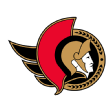
Record: 9-6-4, 22 points
Playoff chances: 60.4%
The Senators got three games out of Brady Tkachuk before their captain was sidelined with a thumb injury, having last played on Oct. 13. Ottawa has gone 8-4-4 in his absence, which is admirable considering how much Tkachuk is the team’s engine. Balance has been the name of the game.
Ottawa is still giving up more goals on average than it’s scoring, but it is finding ways to win games. Tim Stutzle (10 goals in 19 games) has been great, as have Drake Batherson (18 points in 16 games) and Shane Pinto, who earned a new contract with a strong offensive start. The Senators have eight different players in double digits in points through 19 games and have gotten goals from 17 different players.
Analytically, they’re outscoring their expected goals at 5-on-5. The trouble is, they’re worse defensively than their expected goals against per 60 minutes, which ranks second in the league. That’s because …
Cause for concern: … their goaltending has been a horror show. Through 19 games, both Linus Ullmark (minus-8 goals saved above expected) and Leevi Merilainen (minus-2.6) are underwater analytically, and their traditional stats aren’t any better, as both netminders had save percentages under .875.
Ullmark has played slightly better recently, but things with rookie Merilainen were so bumpy that he was demoted to the AHL for a bit to locate his game.
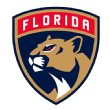
Record: 10-8-1, 21 points
Playoff chances: 47.7%
The Panthers had one prime directive to start the season: Tread water until the reinforcements arrive.
Florida knows it’ll get Matthew Tkachuk back in either December or January after he underwent surgery on his groin. Maybe forwards Tomas Nosek and Jonah Gadjovich and defenseman Dmitry Kulikov will return later in the season. Perhaps the Panthers’ prayers are answered and star captain Aleksander Barkov comes back to the lineup after a freak preseason injury that required surgery to repair the ACL and MCL in his right knee.
Whatever happens, Florida’s hopes for a dynastic Stanley Cup three-peat — the first one since the New York Islanders won four straight Cups in the 1980s — rest on the Panthers not digging an early-season hole in the standings. They’ve successfully avoided that through 19 games, earning a .553 points percentage.
The Panthers’ MVP this season has easily been the Rat King himself, Brad Marchand. The 37-year-old had 23 points in his first 18 games, including a team-leading 13 goals. His partnership with center Anton Lundell saw them go from an essential checking line during last season’s Cup run to the team’s top scoring line in Tkachuk’s absence.
Cause for concern: There’s a reason no one has captured three Stanley Cups in three straight seasons since the days of Mike Bossy and Denis Potvin. There are a lot of miles on some of these Panthers’ tires, especially when you consider they also made a run to the Stanley Cup Final before their back-to-back Cups. There’s already been a wave of injuries this season.
If Florida makes the postseason cut, it’s foolish to believe it couldn’t pull off the three-peat, because this team seems to have been designed in a lab to win in the playoffs. But it’ll be four years of this grind, and that’s a lot of grinding.
0:26
Brad Marchand tallies goal vs. Canucks
Brad Marchand tallies goal vs. Canucks

Record: 10-6-3, 23 points
Playoff chances: 47.3%
After a surprising return to the Stanley Cup playoffs last season, the Canadiens picked up where they left off with a potent offense (sixth in scoring through 18 games) overcoming a somewhat porous defense (25th). Their top line of Cole Caufield, Nick Suzuki and Juraj Slafkovsky is among the best in the NHL, with Suzuki (21 points in 18 games) and Caufield (13 goals) both making early declarative statements to make their respective Olympic teams.
The next wave of Canadiens has made an impact, too. Defenseman Lane Hutson built on his Calder Trophy win with 14 points in 18 games. Winger Ivan Demidov, this season’s Calder favorite, has started strong.
Perhaps most importantly, rookie goalie Jakub Dobes has been outstanding as veteran netminder Sam Montembeault has struggled mightily out of the gate.
Cause for concern: Injuries, injuries and more injuries. Center Kirby Dach will miss the next four to six weeks with a fractured foot. Defenseman Kaiden Guhle could miss up to 10 weeks after undergoing an adductor muscle surgery. Forward Alex Newhook will miss the next four months because of a broken ankle.
The trio joined an injury list that already included scoring winger Patrik Laine, who will miss at least three months after core muscle surgery.

Record: 12-7-1, 25 points
Playoff chances: 34.9%
For years, the debate around Dylan Larkin has been whether he was a true No. 1 center. After an eye-opening performance at the 4 Nations Face-Off last season, Larkin has answered that question with a brilliant first 19 games of the season, with 11 goals and 12 assists as the Red Wings’ early-season MVP.
The Red Wings’ offense should be better than their production. They’re ninth in expected goals per 60 minutes at 5-on-5 but rank 26th in goals scored. Getting Patrick Kane back from injury has helped, but Detroit needs to find a little more help beyond its consistent offensive options such as Alex DeBrincat and Lucas Raymond.
Cause for concern: Wait, wasn’t John Gibson supposed to be the answer in goal when GM Steve Yzerman acquired him from Anaheim? Gibson has been outplayed by incumbent Cam Talbot this season, sporting a .875 save percentage in 11 starts and playing to slightly below replacement levels.
Long shots at best
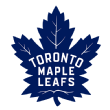
Record: 9-9-2, 20 points
Playoff chances: 24.9%
Life without Mitch Marner has proved difficult for this Maple Leafs team, which had a .474 points percentage entering Tuesday night’s games, tied for last in the conference. Marner is not irreplaceable, but there was zero chance this season’s Maple Leafs were going to sufficiently replace his regular-season contributions on both ends of the ice.
They can still score, as their goals per game through 19 games was higher than last season’s average. William Nylander has been brilliant again, with 26 points in 16 games. John Tavares has 11 goals in 19 games. But a team that finished eighth in the NHL in goals against per game last season under Craig Berube ranks 31st this season. Injuries to forward Scott Laughton, defenseman Chris Tanev and goalie Joseph Woll have contributed to that. Also not helping matters is goalie Anthony Stolarz being unable to find a groove, playing well below replacement level with an .884 save percentage.
The critics are out for the Leafs already in Toronto, with some questioning if this roster is playoff-worthy. The heat on Berube was turned up so high that GM Brad Treliving had to give a vote of confidence. (Uh-oh.) This is what happens when the Blue Jays’ playoff run ends.
Cause for concern: Easily the biggest cause for concern is Auston Matthews. The star center had nine goals and five assists in 17 games before leaving the lineup with a lower-body injury. The Leafs experienced life with a diminished Matthews last season, when he scored 33 goals in 67 games after scoring 69 goals in 81 games in 2023-24. If Toronto is going to rally for a playoff berth, it needs its MVP in the lineup and playing like one.

Record: 7-8-4, 18 points
Playoff chances: 11.2%
The Sabres are seeking their first playoff berth since 2011, and it was starting to look like that streak would remain very much intact. But a couple of wins over the Red Wings and the Edmonton Oilers have Buffalo trending in the right direction again.
Tage Thompson has been on a scoring heater. Rasmus Dahlin returned to the team after tending to a personal matter. Some of the young players in the supporting cast have started to contribute more.
Offensively, the Sabres are just outside the top 10 in expected goals per 60 minutes at 5-on-5, but they have some work to do in puck possession, ranking around 25th in percentage of shot attempts.
Cause for concern: The Sabres are tap-dancing on a land mine when it comes to their goaltending, behind a defense that still yields too much at even strength. Can Alex Lyon be counted on throughout this season? Is Ukko-Pekka Luukkonen part of the solution or potential trade bait? And what to make of rookie Colten Ellis, whose starts have either been Calder-worthy or cringe? (And whither Devon Levi?)

Record: 12-9-0, 24 points
Playoff chances: 3.2%
Again, it must be stressed that this is what the Stathletes model currently projects as the Bruins’ playoff chances, despite this team being in second place in its division after Tuesday’s games.
New coach Marco Sturm played five seasons with the Bruins, three of them in the defensive system of Claude Julien. He was inspired by Julien’s layers of defensive zone coverage, adopting that system for himself. But Sturm tweaked that philosophy to include man-on-man defense to better pressure puck carriers. So far, the results are … well, it’s a work in progress. The Bruins are 26th in the NHL in expected goals against, and they’re 27th in shot attempts against per 60 minutes at 5-on-5.
Luckily, a full training camp did goaltender Jeremy Swayman some good. Through 12 games, he had over nine goals saved above average and eight wins. Offensively, the Bruins have been one of the surprises of the league, with 3.35 goals per game through 20 games. Although 18 different players have a goal this season, it’s been the Morgan Geekie and David Pastrnak show. Geekie proved wrong his doubters who thought that last season was a fluke, scoring 12 goals in 21 games. Pasta continues to be one of hockey’s elite scorers with 11 goals. Combined, they have 44 points on the season.
Cause for concern: Can two players carry an entire offense? Geekie and Pastrnak are the only players to score more than six goals through 21 games this season. It’s never a good sign when a team’s offense can be better defined as a “duo.”

METROPOLITAN DIVISION
The locks

Record: 13-5-1, 27 points
Playoff chances: 99.6%
The Hurricanes don’t have an offensive superstar like Mikko Rantanen, but they might have the best offensive depth that they’ve had under head coach Rod Brind’amour. Carolina was averaging 3.62 goals per game through 19 games, led by Seth Jarvis (10 goals) and Sebastian Aho (18 points) but buoyed by Taylor Hall, Logan Stankoven and Nikolaj Ehlers, all players who arrived in Raleigh in the past calendar year. Second-year man Jackson Blake has also taken a significant leap in production.
Meanwhile, they’re still playing Brind’Amour-quality defense despite star blueliner Jaccob Slavin having been limited to just two games because of injuries, and K’Andre Miller missing a half-dozen games as well.
Cause for concern: Will that offensive depth eventually be enough to break through the Eastern Conference into the Stanley Cup Final, or will we continue to have those “what if” conversations about another Brind’Amour team that couldn’t produce a key goal at a key time in the postseason?

Record: 9-8-2, 20 points
Playoff chances: 90.4%
The Stathletes model likes the Capitals quite a bit.
If this is Alex Ovechkin‘s final season — and despite a disturbing amount of jersey swaps with other NHL stars, that hasn’t been decided yet — coach Spencer Carbery’s team seems determined to make it another playoff year for its captain.
The Capitals continue to chug along with a combination of dependable veterans, energizing young players and solid team defense in front of outstanding goaltending. Ovechkin scored goal No. 900 and is starting to heat up. Their leading scorer has been Tom Wilson (nine goals, nine assists), who is down bad to earn a Canadian Olympic team spot.
But their MVP has been goalie Logan Thompson, who might not have the same stunning won-loss record as last season but has better overall numbers in this campaign.
Cause for concern: Despite having Ovechkin blasting pucks from his office, the Capitals’ power play has been a point of concern for Carbery for the past two seasons. It ranked 30th in the league through 19 games this season, and it’s missing the injured Pierre-Luc Dubois, who was tied for fifth on the team in power-play points last season.
Work to do
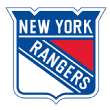
Record: 10-9-2, 22 points
Playoff chances: 87.8%
The Stathletes model loves the Rangers’ playoff chances despite an unbalanced start to their season. And by “unbalanced” we’re of course referring to the fact that they were 1-7-1 at home and 9-1-1 on the road in their first 20 games, which is a heck of a thing.
It took a minute for the scoring stats of some of the Rangers’ top players to catch up to their analytics. Players such as Alexis Lafreniere, Artemi Panarin and Will Cuylle are starting to hit their marks, with Cuylle beginning to look more like the Chris Kreider replacement he was billed to become. Perhaps he can help jump-start J.T. Miller, whose seven even-strength points in his first 20 games is one of the season’s most curious numbers.
The good news as always for the Rangers: The goaltending of Igor Shesterkin and Jonathan Quick can paper over a lot of deficiencies on this team.
Cause for concern: It remains the Rangers’ depth, which really gets exposed when the big dogs aren’t barking. They are a team with solid top-six forwards, a fantastic top defensive paring of Adam Fox (quieting critics) and Vladislav Gavrikov (worth the investment) and then not enough behind them — at least not yet — to make this group a real contender for the Cup, even if its regular-season prospects are solid.

Record: 11-7-2, 24 points
Playoff chances: 56.6%
With Matthew Schaefer, all things are possible. The 18-year-old first pick was like a shot of adrenaline to the heart of this franchise, both in his charismatic personality and his stellar play by any standard, let alone a rookie’s. Schaefer had 15 points in 19 games to start his NHL career, second on the Islanders. His skating and offense have earned him early comparisons to Cale Makar. He has been that good.
Schaefer has grabbed the headlines, but the Islanders have had a handful of strong starts to put them in the playoff conversation, including Bo Horvat (12 goals in 19 games), Mathew Barzal (15 points in 18 games) and especially Emil Heineman (nine goals), who arrived from Montreal in the Noah Dobson trade.
Cause for concern: Ilya Sorokin has 8.8 goals saved above expected in 13 games because the Islanders’ 5-on-5 defense in front of him has been leaky — 29th in the NHL in expected goals against per 60 minutes, and generating only 48.5% of the shot attempts. They must turn those underlying numbers around to contend in the East.
0:56
Matthew Schaefer makes NHL history with OT winner for Islanders
Matthew Schaefer becomes the youngest player in NHL history to score an overtime goal in the regular season.
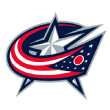
Record: 10-8-2, 22 points
Playoff chances: 50.1%
There are so many things about the Blue Jackets that one loves to see so far this season.
Winger Kirill Marchenko‘s star keeps rising with 22 points in 19 games. Ditto forwards Dmitri Voronkov (16 points) and Adam Fantilli (13 points). Defenseman Zach Werenski, Norris Trophy runner-up last season, is off to another strong start. Young goalie Jet Greaves could be the solution in net they’ve been waiting for.
Cause for concern: But what do these parts add up to? The Jackets still have trouble defending, with their surprisingly stout goaltending overcoming some wonky D-zone metrics. Their special teams, in particular their penalty kill (26th), are in the bottom third of the league.
Again, there are a lot of things to like about Columbus and it’s an easy team to root for. But does coach Dean Evason have a playoff team on his hands or one that’ll just hang around the bubble?

Record: 10-5-4, 24 points
Playoff chances: 41.8%
The Penguins’ 10-5-4 start has them in a playoff spot 19 games into the season, which has significantly reduced the speculation about the futures of Sidney Crosby and Evgeni Malkin. They want to play in the playoffs. If the Penguins are good enough to offer them a legitimate chance of doing so, they’re likely not leaving Pittsburgh this season.
Of course, they’re also the primary reason the Penguins are pushing for the postseason. Malkin, in a contract year, had 23 points through 19 games. Crosby led the team, and nearly the league, with 12 goals. Through a variety of linemates and lineups, the Penguins’ two franchise icons are willing this team to relevance.
Cause for concern: Is this real? Crosby had openly talked about how the Penguins didn’t rebuild on the fly the way the Capitals did around Ovechkin. So far, Pittsburgh’s young supporting cast has provided enough around the veteran core to make things work under new coach Dan Muse.
But the Penguins are getting better defensive results than their metrics would predict, thanks to the second-best team save percentage in the NHL (.915). To which we ask again: Is this real?

Record: 9-6-3, 21 points
Playoff chances: 27.2%
In some ways, the Flyers are a very similar team to the one that predated new coach Rick Tocchet’s arrival. They don’t earn the majority of shot attempts. They are fairly good defensively at 5-on-5, although with a propensity to get stuck in their own zone a bit too much. Luckily, goalie Dan Vladar (.909 save percentage in 11 games) has been one of the offseason’s best pickups, giving the Flyers saves they weren’t getting last season.
Where Tocchet has made an impact is in giving this retooling team some structure, which helps in suppressing shots but at the sacrifice of some offense. It’s a tough team to play against, but perhaps not a dangerous enough one.
Cause for concern: The Flyers’ best offensive player this season is a flashy trick-shot artist with a dynamic offensive game. That this player is Trevor Zegras — scoring more than a point per game — and not Matvei Michkov is a bit of a surprise. But it’s been bumpy ride for Michkov in his second season, with inconsistent play and fluctuating ice time that included being benched by Tocchet. That tough love is designed to make him a better player. But in the short term, the Flyers need the kind of production Michkov had last season.
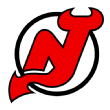
Record: 13-5-1, 27 points
Playoff chances: 21.8%
I was sort of baffled by the playoff probability here, as the Devils are tied atop the Metro Division, but had playoff odds in the neighborhood of the St. Louis Blues and Red Wings.
The way the Stathletes’ model works, the probability is based on the current lineup for the full season. Which means a Devils team without Jack Hughes, who needed surgery on his hand after a “freak accident” at a recent team dinner. In reality, if Hughes is out for eight weeks, that means he’d miss around 50% of their remaining games. The probability then would be more in the neighborhood of 45% rather than this dire prediction.
The Devils are going to miss Hughes greatly, considering what an incredible start he had. Regrettably but understandably, they have learned to play without him, as they did last season when Hughes missed the last month and a half while the Devils scratched and clawed to make the playoff cut. That’s especially true of winger Jesper Bratt, who had 16 points in the 13 games after Hughes was injured last season.
Cause for concern: One way to get through the Jack-less part of the schedule would be for the Devils to rely on their goaltending. But Jacob Markstrom remains a goaltender who can’t be trusted. He has an .870 save percentage in eight starts, with a minus-2.1 goals saved above expected. He has been outplayed by crease-mate Jake Allen. Markstrom has a higher ceiling and could carry this team if he gets hot. But the Devils will settle for him to be consistent enough to make this tandem something better than 11th in team save percentage.

CENTRAL DIVISION
The locks

Record: 13-1-5, 31 points
Playoff chances: 99.9%
Just 19 games into the season, there is a 0.01% chance the Avalanche don’t make the playoffs. They’ll probably take those odds.
The Avs have one regulation loss in their first 19 games. ONE! The Bruins beat them 3-2 on Oct. 25 thanks to 31 saves from Jeremy Swayman. Otherwise, it’s been all victories and post-regulation losses for the Central Division leaders.
Entering Tuesday night, Colorado led the league in goals scored (4.11 per game, the only NHL team scoring four or more on average) and goals-against average (2.37 per game). Nathan MacKinnon led the league in goals (14) and points (33) and plus-minus (plus-19). Cale Makar led all defensemen in points (25). Sixteen different Avs had scored at least a goal this season.
Meanwhile, journeyman goalie Scott Wedgewood was a revelation through 15 games, going 11-1-2 while Mackenzie Blackwood worked his way back from injury.
Colorado is the NHL’s best team about a quarter way through the season, and there’s still room for improvement.
Cause for concern: Let’s assume that the team’s power play (16.7%) eventually finds its groove and focus on two players who haven’t sprinted out of the gate for Colorado. Brock Nelson, who signed a new deal with the Avalanche after they acquired him from the Islanders at the trade deadline last season, has nine points in 19 games. Captain Gabriel Landeskog remains of the NHL’s greatest feel-good stories, but he has just six points in 21 games while skating 13:41 on average.
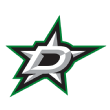
Record: 12-5-3, 27 points
Playoff chances: 87.4%
When it comes to the Stars, it’s been interesting to see what hasn’t gotten the full attention of the NHL. Like the fact that Mikko Rantanen, whose status as a superstar player was debated during his dual trades last season, had 26 points in 19 games, good for sixth in the NHL in points-per-game average (1.37). Or that Jason Robertson, mentioned more in trade rumors than anywhere else last season, has 23 points for the Stars. Or that Wyatt Johnston, last seen not scoring in the playoffs, leads the team with 11 goals.
Under new head coach Glen Gulutzan, the Stars are in the top 10 in both offense and defense, with both Jake Oettinger and Casey DeSmith playing well in goal. They’ve overcome some injuries and rougher starts for players to become entrenched in second place in the Central.
Cause for concern: The Stars’ defensive depth wasn’t all that deep to begin with before losing standout Thomas Harley, who is week-to-week with a lower-body injury. With Nils Lundkvist also on long-term injured reserve, that lack of depth is being tested early for Dallas. When Harley does return, the Stars hope it’s with a better run of play than his first 18 games, in which he scored one goal and skated to a minus-7.
Work to do

Record: 9-7-4, 22 points
Playoff chances: 82.7%
Whether Kirill Kaprizov is worth $17 million against the salary cap annually remains a debate worth having, especially when one considers the contracts signed in the aftermath of that megadeal. What can’t be disputed is his offensive acumen and how vital it is to the Wild. Kaprizov led the team with 23 points, including 11 goals, in their first 20 games of the season.
Matt Boldy (21 points, including 10 goals) and his linemate Marcus Johansson (17 points) were the Wild’s other leading scorers. Rookie defenseman Zeev Buium (10 points) has helped juice their power play to fourth in the NHL.
One of the more intriguing developments for the Wild is the start for Jesper Wallstedt, the team’s perpetual “goalie of the future.” Perhaps the future is now: He won four of his first six starts with a stellar .924 save percentage and two shutouts. The Wild are the fifth-best team in 5-on-5 goals against per 60 minutes.
Cause for concern: Alas, they were 32nd in the NHL in goals per 60 minutes at 5-on-5 through 20 games (1.79). There’s a significant drop-off after those top three scorers. The Wild have dealt with some injuries up front, including one to center Marco Rossi that has him week-to-week. That obviously has played a role in this, but overall it’s been a sputtering offensive start for Minnesota.

Record: 10-7-3, 22 points
Playoff chances: 78.5%
The Mammoth were picked by many to make the playoffs in their second season in Salt Lake City, and they’ve been in the playoff mix through 19 games. They’re getting offensive contributions from veterans such as Nick Schmaltz (22 points) and Clayton Keller (18 points) and their outstanding younger stars such as Logan Cooley and Dylan Guenther (both with 15 points). Forward JJ Peterka, acquired from Buffalo last offseason, has hit his marks as well (13 points).
Cause for concern: The Mammoth should be better defensively at 5-on-5 than they’ve been, based on the analytics. But Vitek Vanecek (.875) and Karel Vejmelka (.883) haven’t played up to expectations, with both in the negative in wins above replacement, per Evolving Hockey.
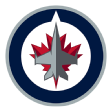
Record: 12-7-0, 24 points
Playoff chances: 74.9%
Once again, the Jets’ holy trinity of Mark Scheifele (24 points), Kyle Connor (10 goals) and Josh Morrissey (19 points) is the driving offensive force for Winnipeg. Along with Gabriel Vilardi (14 points) and Nino Niederreiter (11 points), they’re the only Jets to have double-digit points through 18 games.
Meanwhile, Connor Hellebuyck (.913 save percentage, 2.51 goals-against average) is pushing for a Vezina Trophy hat trick as the Jets’ last line of defense. His underlying numbers indicate he’s doing some heavy lifting: 12.5 goals saved above expected in 14 games.
Cause for concern: The reason Hellebuyck has had to be so good? The Jets have inexplicably been one of the worst 5-on-5 teams, ranking 30th in the NHL in expected goals for and against this season. That includes generating just 45% of the shot attempts at 5-on-5. Looking back at last season, this is all a bit stunning. Was Nikolaj Ehlers the secret sauce after all?
0:40
Gabriel Vilardi wins it for the Jets in a shootout
Gabriel Vilardi wins it for the Jets in a shootout
Long shots at best
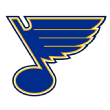
Record: 6-9-5, 17 points
Playoff chances: 24.8%
Stathletes still gives the Blues a 1-in-4 chance of making the Stanley Cup playoffs, which is probably news to the St. Louis fans who are in a full-on panic about a team with a .421 points percentage after 19 games.
There isn’t much that’s working for the Blues right now. They were 25th in the NHL in goals per game and 32nd in goals against, with the league’s worst goaltending so far (.861 save percentage). No one on the roster averaged a point per game. No one had cracked double digits in goals. Things are … not good.
Cause for concern: The Blues are 13th in expected goals against this season, down from third in the NHL at 5-on-5 last season, but still the kind of thing you’d expect from a Jim Montgomery team. The problem, again, is Jordan Binnington (minus-8.4 goals saved above expected) and Joel Hofer (minus-3.7) have been the league’s worst goaltending tandem through a quarter of the season, subverting any positive momentum the Blues can generate defensively.
Lottery-bound

Record: 6-10-4, 16 points
Playoff chances: 3.0%
GM Barry Trotz recently said the Predators are in a “transitional phase.” That’s a polite way of saying that the team he built might have some uncomfortable conversations and difficult decisions ahead of it after Nashville’s second straight bad start.
The Predators had a .400 points percentage after 20 games this season. From losing defenseman Roman Josi to injury to another inexplicably putrid start for Steven Stamkos (four goals in 20 games), few things have trended in the right direction under head coach Andrew Brunette.
Cause for concern: At the start of the season, it looked like the old Juuse Saros was back as the 30-year-old goalie was seeking to rebound from his worst NHL season statistically. But after 16 games, Saros had a .892 save percentage and was on the wrong side of both goals saved above expected and wins above replacement. The safety net had frayed, again.

Record: 10-5-4, 24 points
Playoff chances: 0.5%
Whether or not the Blackhawks make the playoffs matters not. This season needed to show some proof of concept. After 18 games, they’ve watched Connor Bedard dominate to the tune of 26 points in 18 games, including 10 goals. (That’ll get Team Canada’s attention.)
They’ve also seen Frank Nazar (12 points in 16 games) show that he can be Bedard’s offensive complement. They’ve seen Spencer Knight, acquired from Florida in the Seth Jones trade, play like a potential franchise goaltender with a .924 save percentage in 13 games under new head coach Jeff Blashill.
Cause for concern: Sam Rinzel is 20 years old with less than 30 games of NHL experience, so “concern” is a relative term here. But the 6-4 rookie defenseman was expected to be a significant contributor offensively this season, including as a potential power-play quarterback. After 17 games, he had one goal and two assists, having been already pulled from the line for a mental reset. He’s a terrifically talented player. He’ll be fine. But this was a rough start.

PACIFIC DIVISION
The locks

Record: 9-4-6, 24 points
Playoff chances: 99.8%
The Stathletes model clearly believes that the Golden Knights are much better than their very average start to the season — or at least that when the smoke clears in the Pacific Division, they’ll be in a playoff spot.
There have certainly been times this season when the Golden Knights have looked formidable against good teams. The performances from stars Jack Eichel (24 points in 18 games) and Mitch Marner (20 points) have been as advertised, and Vegas has also gotten great starts from Pavel Dorofeyev (11 goals), Tomas Hertl (15 points) and Shea Theodore, who has played well as the new No. 1 defenseman after Alex Pietrangelo bowed out due to injury this season.
But given their recent stumbles and some lineup absences, there’s a sense that the best is yet to come for the Golden Knights.
Cause for concern: Injuries to key players is nothing new for Vegas, but that doesn’t make it any easier to play through these absences.
Mark Stone last played on Oct. 18 before leaving the lineup with a wrist injury. His absence impacts every facet of the Knights’ game. Ditto William Karlsson, who is week-to-week with a lower-body injury. Starting goalie Adin Hill hasn’t played since Oct. 20. Ask the Knights and they’ll tell you this is nothing new, and that teams play through injuries every season. But until they get these key performers back, it’s hard not to see Vegas as being stuck in neutral.
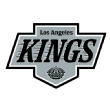
Record: 10-6-4, 24 points
Playoff chances: 83.4%
Anze Kopitar‘s decision to hang up the skates after this season lends some urgency — and perhaps a little melancholy — to the 2025-26 Kings campaign. GM Ken Holland certainly managed the roster with a win-now attitude, adding old Edmonton allies in winger Corey Perry (seven goals) and defenseman Cody Ceci.
But overall, this is much the same group that’s been unable to overcome the Oilers in the first round of the playoffs. Adrian Kempe (19 points in 20 games), Quinton Byfield (17 points) and Kevin Fiala (15 points) lead an offense for a team that basically gives up as much as it scores at 5-on-5, but one that ranks in the top six defensively at even strength.
Cause for concern: With 16 players age 29 or over on the roster, the ability for the Kings to stay healthy is paramount. They’re going to be without defenseman Drew Doughty for a couple of weeks due to a lower-body injury. Perry and Kopitar have both missed time this season. Their team defense and the goaltending of Darcy Kuemper should hopefully help them through injury absences, as they’re the reason L.A. has a .600 points percentage to start the season.
Work to do

Record: 9-8-4, 22 points
Playoff chances: 75.9%
The Oilers and early-season panic over middling results … find a more perfect couple. Edmonton had a .524 points percentage through its first 21 games, leaving some to wonder if the Oilers would make the playoffs, let alone advance to a third straight Stanley Cup Final. Connor McDavid (30 points) and Leon Draisaitl (24 points) are dragging this group through that early-season malaise, with an assist by Jack Roslovic (seven goals), who has been a great addition to the roster.
It’s the same story as always for Edmonton, as Kris Knoblauch coaches through injuries and middling performances and mediocre goaltending to keep the Oilers close enough that Connor and Leon can carry them into the postseason. But how far can they go beyond that?
Cause for concern: Roslovic has been the exception to the rule for the Oilers, as many of their player additions in the past year haven’t made much of an impact. (Looking at you, Trent “one goal in 21 games” Frederic.) Young solutions on cheap contracts such as Matt Savoie and Isaac Howard weren’t ready to be the answer quite yet.
Overall, this roster seems diminished from previous editions, and not just because it lost the worm-like whimsy of Corey Perry. That’s not a great thing to have happen when the clock is ticking on McDavid’s time in Edmonton.

Record: 12-6-1, 25 points
Playoff chances: 68.1%
The arrival of coach Joel Quenneville and winger Chris Kreider helped supercharge the Ducks’ offense. They averaged 3.63 goals per game through 19 games, hanging a touchdown on a few opponents along the way.
Kreider had 10 goals in 15 games, with five of them coming on the power play. But the offensive parade in Disneyland was led by burgeoning young stars Leo Carlsson (26 points, including 11 goals) and Cutter Gauthier (22 points, including 12 goals) as well as Ducks mainstay Troy Terry (21 points). Anaheim is never out of a game thanks to that offense.
Cause for concern: Unfortunately, the game has another facet called “defense,” and Quenneville has some work to do there in order for the Ducks to be a real contender.
Entering Tuesday night, Anaheim was the second-worst team in expected goals against per 60 minutes at 5-on-5, and 25th in shot attempts surrendered. Lukas Dostal‘s Vezina Trophy-worthy goaltending has papered over much of this defensive deficiency, but that’s not a sustainable model for a playoff team in the West. The Ducks are young. They’ll improve. But they’re not there defensively yet.
Long shots at best

Record: 9-5-5, 23 points
Playoff chances: 9.9%
Lane Lambert’s arrival behind the Kraken bench has given the team better structure and more confidence early this season. The Kraken have cut down on the high-danger chances for opponents and have been near the top 10 in expected goals against. That has helped their goalies to seventh in the NHL in save percentage. When even Philipp Grubauer‘s stats look good, you know the defense is doing its job.
Seattle is getting enough offensive contributions from veteran scorers such as Jaden Schwartz (14 points) and Jordan Eberle (13 points) to sit second in the Pacific after 18 games, winning three games in overtime and picking up five charity points.
Cause for concern: As much as Lambert’s defensive structure has benefitted the Kraken, their offense hasn’t been nearly as effective. Seattle ranked last in expected goals for and 30th in goals per 60 minutes during this hot start.
Getting Jared McCann back from injury should help, as he was limited to just five games after topping 60 points in each of the past three seasons. But the Kraken need more offensive crackle to make the playoff cut.
Lottery-bound
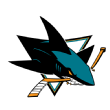
Record: 9-8-3, 21 points
Playoff chances: 5.7%
The Sharks were a surprising .500 team through the first 19 games of the season thanks to Macklin Celebrini playing like a Hart Trophy finalist. His 27 points in that span were 10 points better than teammate Will Smith to lead the Sharks, including 10 goals.
It’s a season so dominant that he might have played his way onto the Canadian Olympic team, and rightfully so.
Cause for concern: There should be some concern about the chiropractic health of Celebrini and the Sharks’ goaltenders, because they’ve carried the team on their backs so far this season. Yaroslav Askarov and Alex Nedeljkovic have San Jose just outside of the top 10 in team save percentage, with Askarov in particular playing better than expected.
The Sharks probably don’t have the depth to avoid the lottery again, but they’re fun and full of potential.
0:32
Macklin Celebrini’s hat trick wins it for Sharks in OT
Macklin Celebrini scores on the power play for San Jose Sharks
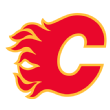
Record: 5-13-3, 13 points
Playoff chances: 5.0%
There might not be another team with a larger gulf between its metrics (54.5% expected goals at 5-on-5) and its actual numbers (46.3% goals for percentage, 25th in the NHL). Much of that is due to a sputtering offense that’s last in the NHL in goals per game (2.10), thanks in no small part to the league’s most powerless power play (11.9%).
The good news is that goaltender Dustin Wolf has overcome a frustrating start to play much better over the past few weeks. His overall numbers haven’t reflected it yet, as Wolf is still at minus-2.6 goals saved above expected, but the Flames’ last line of defense is starting to act as such again.
Cause for concern: Is the season lost already? The Flames (.325) had the worst points percentage in the NHL through 20 games. The conversation about the Flames trading players like Rasmus Andersson and Nazem Kadri is starting to go from “if?” to “when?” That’s not the noise the Flames want to hear midway through November.

Record: 9-10-2, 20 points
Playoff chances: 0.4%
Quinn Hughes is a rather important player for the Canucks. Despite missing a handful of games, he led the team in scoring with 20 points in 16 appearances, including 10 points in three games recently. He’s averaging well over 26 minutes per game in ice time, including nearly five minutes per game on the power play. He has been incredible, again.
If only he had a little more help. Injuries (especially to center Filip Chytil) and ineffectiveness have created a team that’s 30th in expected goals percentage at 5-on-5 and underwater on shot attempts (44.7%). There have been some real offensive highlights — Kiefer Sherwood‘s goal explosion, Elias Pettersson getting near a point-per-game pace again — and there have been some lowlights, such as Evander Kane‘s start (three goals in 21 games).
Cause for concern: The Canucks’ penalty kill ranked last in the NHL heading into Tuesday night, at a putrid 67% rate. They’ve given up a power-play goal in 15 games, and multiple ones in eight games. Getting Teddy Blueger back from injury will help, but the team is feeling the offseason departures of Pius Suter and Dakota Joshua. Of course, having a healthy Thatcher Demko in goal would help, too.
Sports
PCB clears air on finalisation of new PSL teams’ names

The Pakistan Cricket Board (PCB) on Thursday refuted news circulating in the media regarding the finalisation of the two city names for new Pakistan Super League (PSL) franchises.
In a statement, the PCB clarified that, as per the process, the successful bidders will have the right to choose a team name from any of the city/team names listed by the board earlier. Faisalabad, Rawalpindi, Hyderabad, Sialkot, Muzaffarabad, and Gilgit were the six teams shortlisted by the PCB.
“The PCB is pleased to note and welcomes the growing interest in acquisition of team franchise rights for two new teams for future editions of the PSL,” it added.
PSL Chief Executive Officer (CEO) Salman Naseer announced last month that an auction will take place for two new franchises in the 11th edition of the tournament.
“An auction will be held for two new PSL franchises. Bidding parties will be given a pool of city names from which they can select one team,” Naseer told reporters in a presser in Karachi on October 29.
It is pertinent to mention here that the public advertisement for tendering of the Team Franchise Rights was published on November 15, 2025 and invites bids from interested parties from around the world.
The deadline for submitting technical proposals is December 15 2025 at 11am, the PCB said.
Sports
‘The canaries in the coal mine’: Why teams like Man United invest in player care
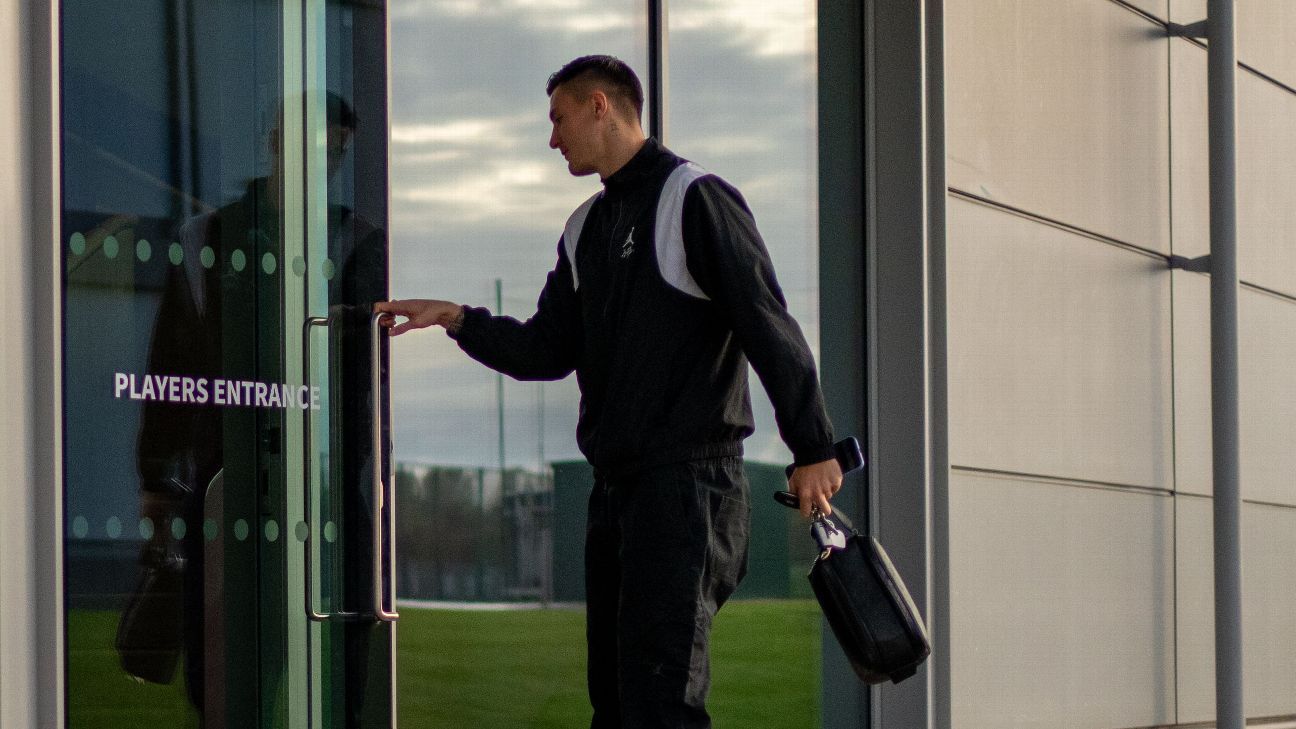
Each day, Manchester United‘s players drive down Birch Road, occasionally stopping for the horses from the Carrington Riding Centre or a cyclist, and turn into the club’s training ground. When the autograph seekers are satisfied and the entry barriers are lifted, they turn in front of the red neon “Manchester United” sign and head toward the first team parking lot behind the main building.
With their sports cars and luxury SUVs locked and their travel bags under their arms, they walk inside.
Once in the area known as the “players’ corridor,” an office behind glass panels is immediately on the left side, with a large desk in the middle and chairs on either side. On the back wall is a large flat-screen TV, and there are telephones and laptops in the room. The door is always open.
But it’s not an office for manager Ruben Amorim, CEO Omar Berrada or director of football Jason Wilcox. Instead, this room is reserved for the player care team. It’s the department that works to ensure each squad member has everything they need off the pitch so they can perform on it.
Player care departments aren’t unique to United. Across the Premier League, clubs are investing more to make sure their players have everything they need to perform at their optimum level. At United’s training ground, these services are front and centre for a reason.
The goal? Players leaving their problems at the door, feeling better and heading into training with a clear mind, ready to focus on football.
What is player care?
If the manager’s job is to oversee what happens at the training ground, it’s the responsibility of the player care department to look after the rest. Anything and everything a player might encounter can land on their desk, most of it not football-related.
“It’s based around the person rather than the player,” player care expert Hugo Scheckter told ESPN. “A very vague way of putting it is that it’s everything that affects a player that’s not football or medical. For three or four hours a day, players are at the training ground. Everything outside of that can be covered by player care.
“It could be personal-developmental stuff, giving them the life skills to improve themselves, welfare stuff like signposting to mental health provisions, or operational things like relocations and problem-solving. We’re trying to be that resource where they can remove the stress away from life to focus on football.”
– Ian Darke’s PL stars so far: Haaland, Caicedo, more
– If the World Cup started today, who will win it?
– Connelly: Lessons learned after 10 games in top leagues
Scheckter has worked for Premier League clubs, including West Ham and Brentford, and in 2020, he set up the Player Care Group. He has years of experience helping players find houses, pick schools for their children, tax cars and sort match tickets.
Other times, it means dealing with emergencies such as a car accident or home break-in. Occasionally, the problem is more unusual.
“I had one player who asked me to hunt a bird that was scaring his girlfriend. He wanted it shot, and I had to say, ‘We don’t do that in England,'” Scheckter said.
“My solution was to get an ultrasonic bird that basically scared it away, but his first thought was can we [kill it]? Ultimately, they wanted a problem solved, and I can understand that. The bird was tapping on the window all the time, and his girlfriend was scared of birds. So we got a little £10 thing on Amazon to scare it away.
“It can seem a small thing, but then on the other hand, if he’s awake all night or always getting complaints from his girlfriend, it can affect performance. It sounds silly, but it can be quite important as well.”
‘The canaries in the coal mine’
In the search for marginal gains and a competitive edge, clubs are increasingly taking player care more seriously. Foster and Partners, the London-based architectural firm responsible for the £50m revamp of Manchester United’s Carrington training ground, purposely put the player care office toward the front of the players’ entrance to the building.
It’s a similar story at clubs all over the world.
“The player care team are like the canaries in the coal mine,” one high-level source at a Premier League club told ESPN. “Often, they’re the ones who can spot the first sign of trouble.
“Coaches and medical staff will know everything about a player’s performance, but the player care or player support team know far more about their non-football lives than a manager or coach. And the two things are intertwined. One impacts the other.”
Scheckter adds: “I think it used to be a very reactive service where a player would bring a problem in, and they would try and solve it. Now, I think you’re seeing more and more clubs who are trying to get ahead of those problems, so they don’t even appear at all. Or if they do, that they’re well-managed, and there’s a process in place.”
Investment in player care varies from club to club. Player care teams can range from one or two employees to five or more. Most Premier League clubs have separate departments for their men’s, women’s and academy sides.
Most of the time, however, the department’s effectiveness depends on how seriously it’s taken by the first-team manager and his staff. Some coaches can be quite dismissive of anything that goes on outside the training ground, but others are keen to take a more holistic approach.
“A lot of time, it’s club culture-dependent,” Scheckter said. “I’ve had managers who are not negative towards it, but kind of apathetic. It depends from manager to manager. With some, you just stay out of the way, and with others, you’re really involved at the top table in management meetings every day. That’s really exciting as well.”
There are clear benefits to including the player care team in performance meetings that include other key heads of department.
“You’ve got the nutritionist there, you’ve got the fitness coaches there, you’ve got the coaching staff there, the manager there. And the conversation can be about a player who has lost three kilos in the last month,” Scheckter said.
“I can be like, ‘Oh well, that’s because his girlfriend is away and he doesn’t cook.’ So next time his girlfriend goes away, we need to make sure he’s getting food delivered or we get a chef in, or whatever it is. The nutritionist in isolation might be thinking he’s unwell or he’s skipping meals. It’s good to have that joined-up approach.
“I’ve gone to managers before and said privately, ‘Look, his mother died a year ago on this day, just so you are aware,’ and they’ll go, ‘OK, thank you. That’s why he was off today in training.'”
With football becoming an increasingly global game, there’s pressure on player care teams to help players new to the country settle quickly. It’s not unusual for departments to be in touch with counterparts at rival clubs, especially if they have players of the same nationality.
“If we’ve got a player from Brazil, we might get in touch with another club local to us if they also have a Brazilian player,” one Premier League source said. “It’s in our interest to do that, share intelligence, and help build a wider network for a player’s family to help them feel settled.”
1:12
Are Manchester United getting smarter with their transfer deals?
Mark Ogden explains why there’s optimism around Manchester United’s transfer strategy after turning down the chance to sign Chelsea’s Roméo Lavia.
In many circumstances, the role of the player care team extends beyond the players.
“The partners, especially at the Premier League level, none of them tend to work or very few of them tend to work, and so you have a situation where they’ve just sat around and so trying to provide a purpose for them and a direction for them is really important,” Scheckter said.
“We see it more and more where the player is really happy, but the partner or the family aren’t, and so we’re seeing clubs invest more and more into family programs.
“It can be hard moving to a new country. We’re definitely seeing that as a bigger issue, where players are happy, partners are not, and then that’s leading to a player either wanting to leave or talking about potentially having to leave, which is a disaster for clubs.”
Whether it’s to take on the role of wellness professional or concierge, the job of the player care team is to keep players happy. But that doesn’t mean clubs want to pamper their stars.
“There’s a balance,” one source told ESPN. “We don’t want players who are detached from everyday life. But we also don’t want players worrying about renewing a passport or a dispute with a landlord because that takes up mental space.
“There’s a growing understanding throughout sport that mental well-being is important to performance. We want to take away the burden of the stresses associated with everyday life as much as we can so players can focus on training and matches.”
‘Make sure the athletes are the best they can be’
More often than not, the player care team members work in the background. On other occasions, they’re thrust into the spotlight.
After West Ham failed to win for more than two months, new manager Nuno Espirito Santo revealed that the club’s player care department sourced baby pictures of the players to decorate the dressing room to serve as motivation ahead of Newcastle’s visit to the London Stadium. It worked, and West Ham won 3-1.
“It was a surprise for everybody,” Nuno said afterward. “The player care [team] really do things really nice. They did it in a really nice way, the player care. The players didn’t know.
“It’s nice to see when we are young and had dreams. For us, it is important to go back to that feeling of being young and happy and try to enjoy things.”
Scheckter tells a story about a player he encountered at the start of his career in player care who appeared to be fine on the surface but left at the end of the season because his partner hadn’t settled.
There also have been small wins that can make all the difference.
“There was a player who was consistently late for team meetings and he was an African player, and he got dropped from a game,” Scheckter said. “The manager was basically like, ‘He’s just not professional, he’s not focused.’ So, I went and spoke to him, and he was very upset about it.
“I said to him, ‘Why are you late? He said, ‘Well, where I’m from … we don’t have reliable transport, we don’t have reliable timekeeping devices, and meeting time in my culture and my life has always been a suggestion.’ And I’m like, ‘Well, OK, I appreciate that, but in the UK or in England, if you’re not five minutes early, you’re late.
“And so I said, ‘OK, let’s work with you.’ I would go and knock on his door or go get him before everything he had to be at for a couple of weeks, and after those couple of weeks, then he kind of got it and was on time. It’s about working proactively to solve problems and make sure the athletes are the best they can be.”
In the end, the goal is always the same, whether the issue is timekeeping, staying on top of the pressures of the game, or dealing with a bird that won’t stop tapping on a window.
-

 Tech5 days ago
Tech5 days agoNew carbon capture method uses water and pressure to remove CO₂ from emissions at half current costs
-

 Politics6 days ago
Politics6 days agoBritish-Pakistani honoured for transforming UK halal meat industry
-

 Sports5 days ago
Sports5 days agoTexas A&M officer scolds South Carolina wide receiver after touchdown; department speaks out
-

 Business5 days ago
Business5 days agoThese 9 Common Money Mistakes Are Eating Your Income
-

 Sports6 days ago
Sports6 days agoApple scrapping MLS Season Pass service in ’26
-

 Business6 days ago
Business6 days agoWhat’s behind Rachel Reeves’s hokey cokey on income tax rises?
-

 Fashion6 days ago
Fashion6 days agoAfter London, Leeds and Newcastle, next stop Glasgow for busy Omnes
-

 Tech6 days ago
Tech6 days ago$25 Off Exclusive Blue Apron Coupon for November 2025






